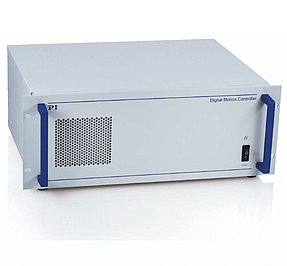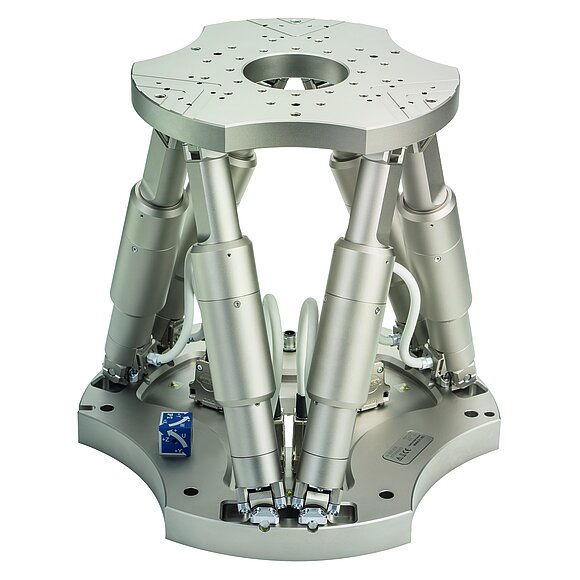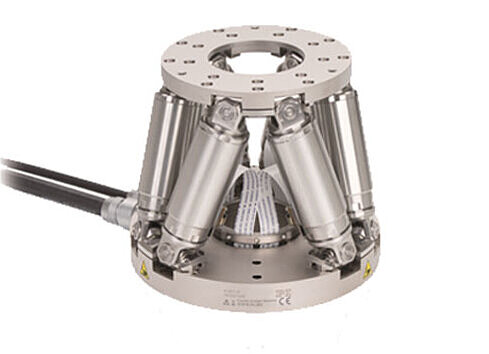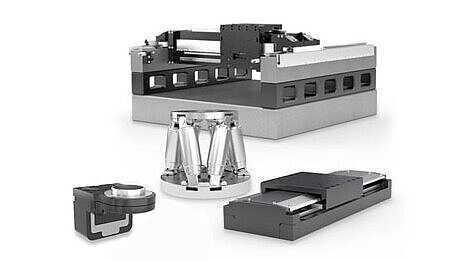Two new 6-axis hexapod motion controllers are now available for PI's new H-series hexapod precision 6-axis stage family. The new C-887.21 compact motion controller is a space-saving bench-top unit that also reduces the system cost. It provides the same performance as the larger, C-887.11 controller. This 19" rack-mount unit adds two additional channels for the control of two more motion axes (such as linear positioners, rotation stages) and can also be upgraded with a number of options such as manual control and photometer cards.
Real-time vector motion control system
Both units are real-time motion controllers providing vectorized motion output and position command input based on Cartesian coordinates. A random, virtual pivot point can be defined freely anywhere in the working space. In addition the controllers provide data recorder functionality for recording operating parameters such as motor control, velocity, position or position error.
Other Features
- Macro command language
- Stand-alone operation possible with autostart
- Connection of keyboard and monitor.
- Manual control option
- Custom controllers for high altitude applications (astronomical telescopes)
- Absolute encoder input
- Motor brake control
- Redundant position sensors processing for increased safety (e.g. in medical technology)
Extensive software support
- PIMikroMove user motion software.
- PI GCS common command set for all PI positioning systems.
- Shared libraries for Windows and Linux.
- Complete set of LabVIEW VI's.
- Graphical user interfaces, configuration software and graphically displayed scan routine.
- Optional: PIVeriMove software for checking a restricted operating space
Hexapod Applications
Hexapod applications are found in all technology fields:
- Synchrotrons, High Energy Physics: High precision positioning of synchrotron optics
- Medical engineering (computer aided surgery, tumor radiation treatment)
- Telecommunication (alignment of fibers and fiber-optic chips)
- Laser machining;
- Semiconductor test & metrology (positioning / alignment substrates, lasers);
- Astronomy: Mirror alignment in large earthbound telescopes);
- Microscopy, X-ray microscopy and crystallography, etc.
- Material Testing





